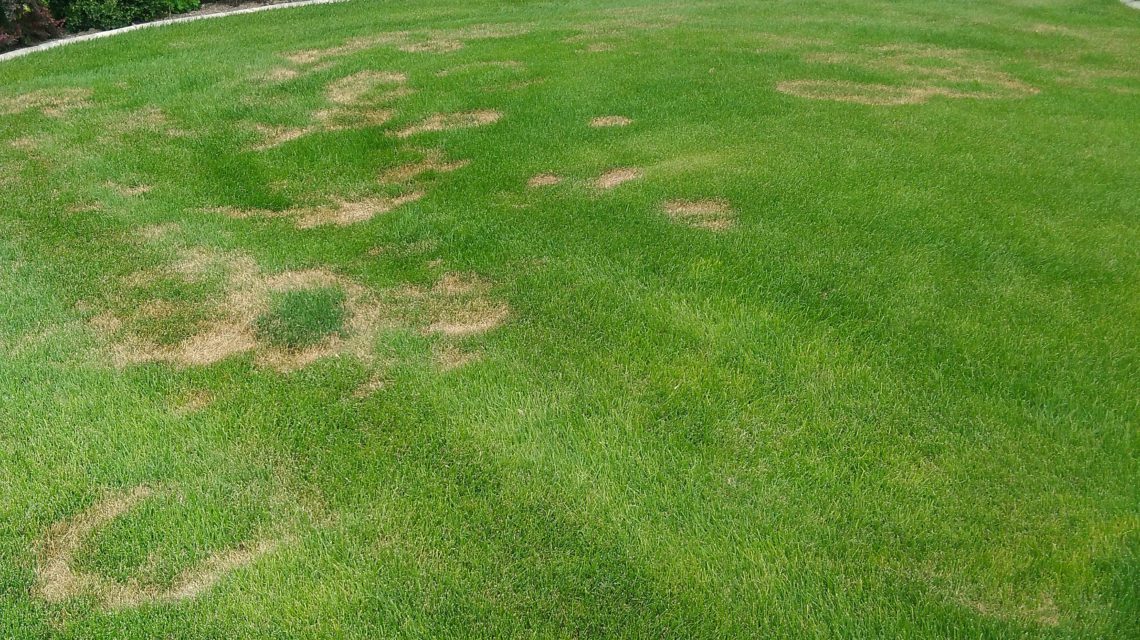Necrotic ring spot fungus is a serious lawn disease that is spreading across Utah. Necrotic ring can develop in cool, wet weather, but the symptoms are more apparent in hot, dry weather.
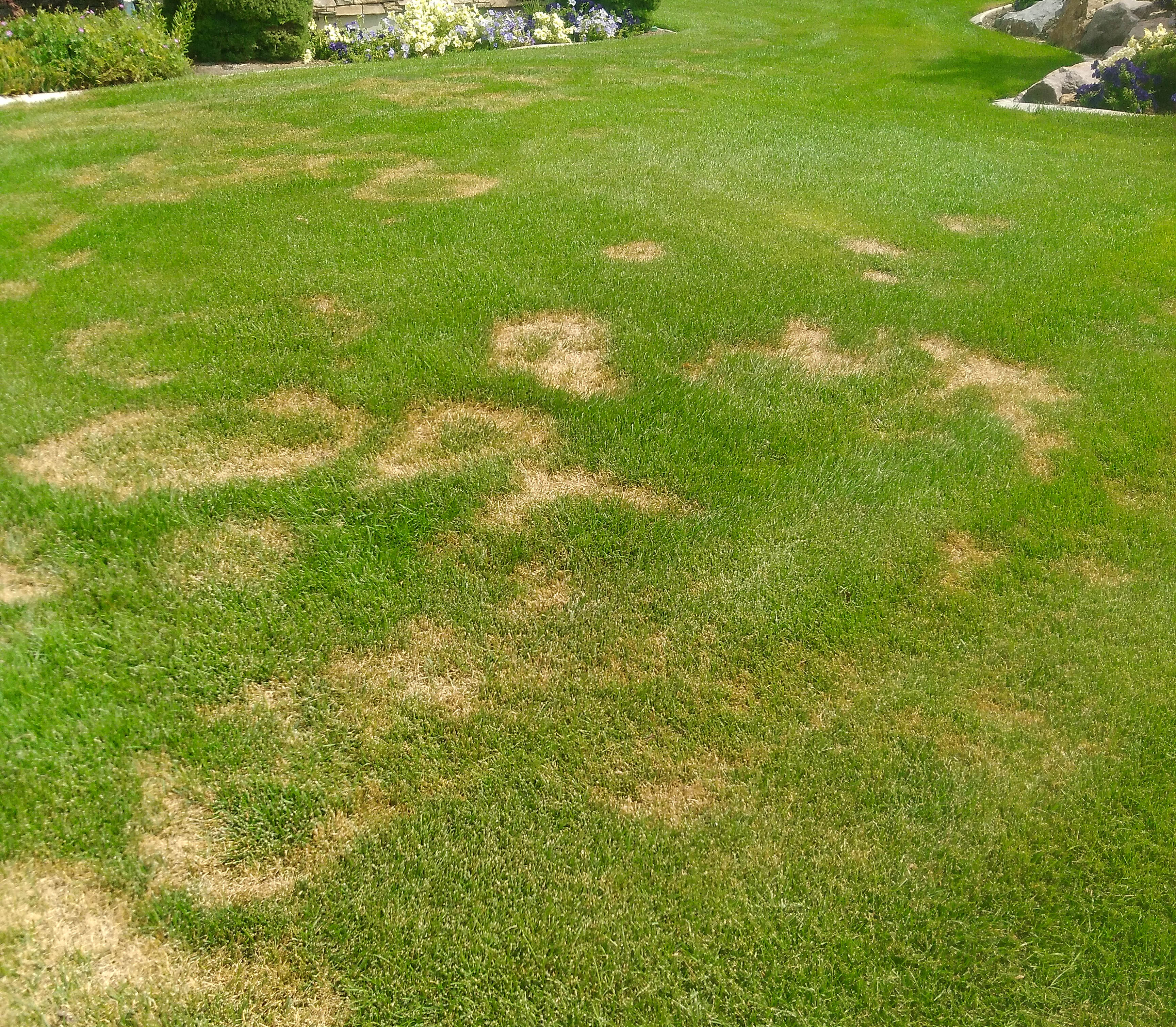

Identifying Necrotic Ring
The disease looks like irregularly shaped rings of brown dying grass, but the center of the ring appears to be green and fairly normal. Rings first turn a bronze or a reddish-brown color. As the disease gets worse, the rings turn to a yellow, straw-like color. If you leave it untreated, the disease will spread throughout your lawn, causing large dead grass and dirt spots.
Necrotic ring is a fungus caused by pathogens that infect and damage the roots and crowns of Kentucky bluegrass blades. Because of this, recovery from necrotic ring will take a few years.
Preventing Necrotic Ring
Necrotic ring spot often spreads from one lawn to another through dirty aerators, so one of the best ways to prevent your lawn from developing necrotic ring is to make sure your aerator is clean and disinfected before aerating your lawn. Another way you can try to prevent necrotic ring is by strengthening your lawn:
- Before planting your lawn, make sure the soil is loose and moist (not dry and compact)
- Use a ryegrass and Kentucky bluegrass seed mix for your lawn
- Water deeply two or three times a week
- Fertilize your lawn regularly
Treating Necrotic Ring
Necrotic ring fungus is almost impossible to kill because it lives in the soil beneath the grass. Though it is difficult to kill, the effects of the disease can be masked (and the grass strengthened) by watering correctly, overseeding the affected areas, aerating, and adding extra nutrients to the grass.
Watering Necrotic Ring
Lawns with a history of incorrect watering are much more susceptible to necrotic ring spot disease. Once your lawn develops necrotic ring, you’ll need to adjust your watering strategy to combat the disease. With a normal watering schedule, you only water two or three times a week, but lawns with necrotic ring should be watered lightly each day in the summer. Follow the watering schedule in the chart below.
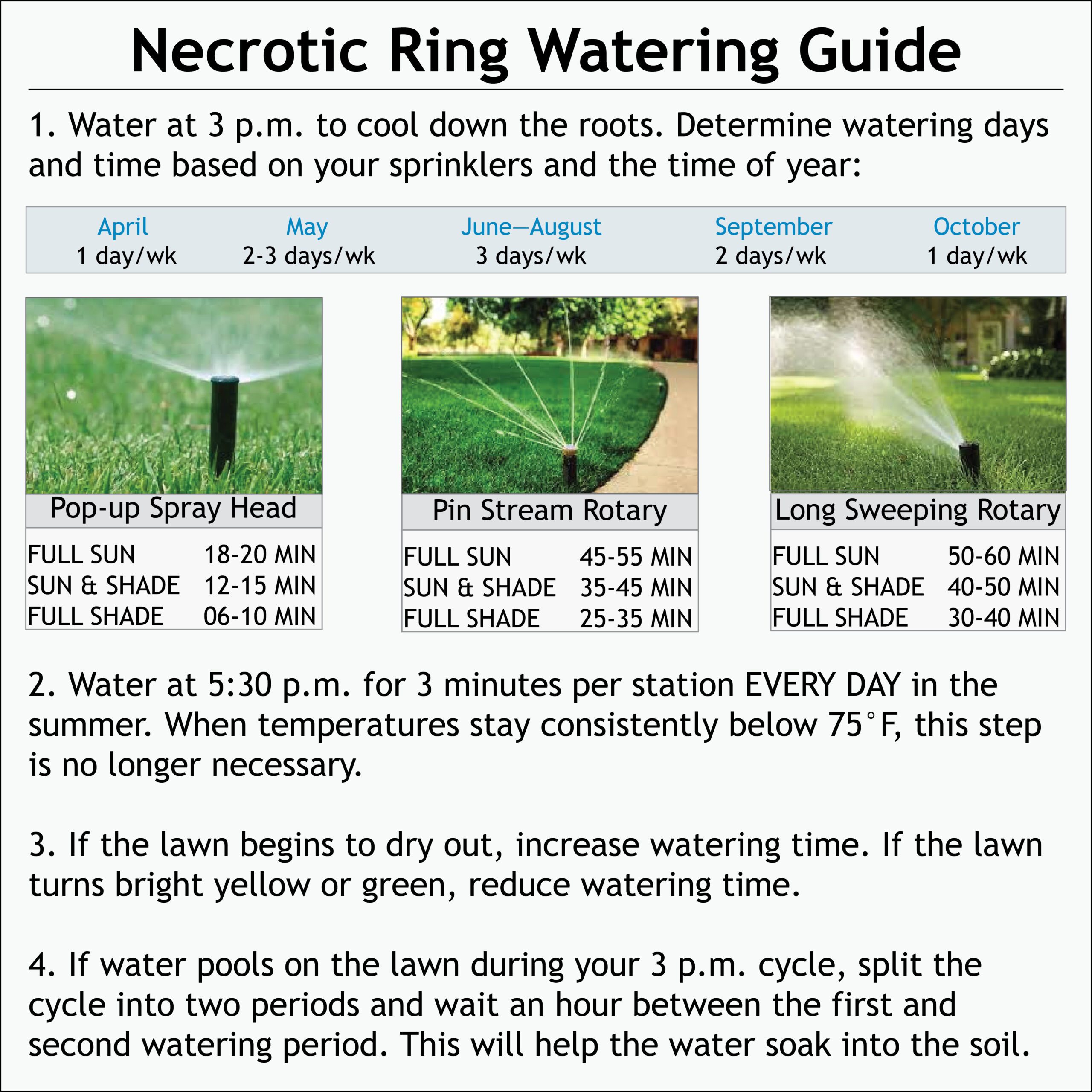

Overseeding Necrotic Ring
The disease lives in the soil, not in the turf. So, if you try to solve the problem by tearing out the old lawn and replacing it with new sod, the dead rings will come back. Perennial ryegrasses do not become infected with the disease, so overseeding patches of necrotic ring with perennial ryegrass will hide the symptoms.
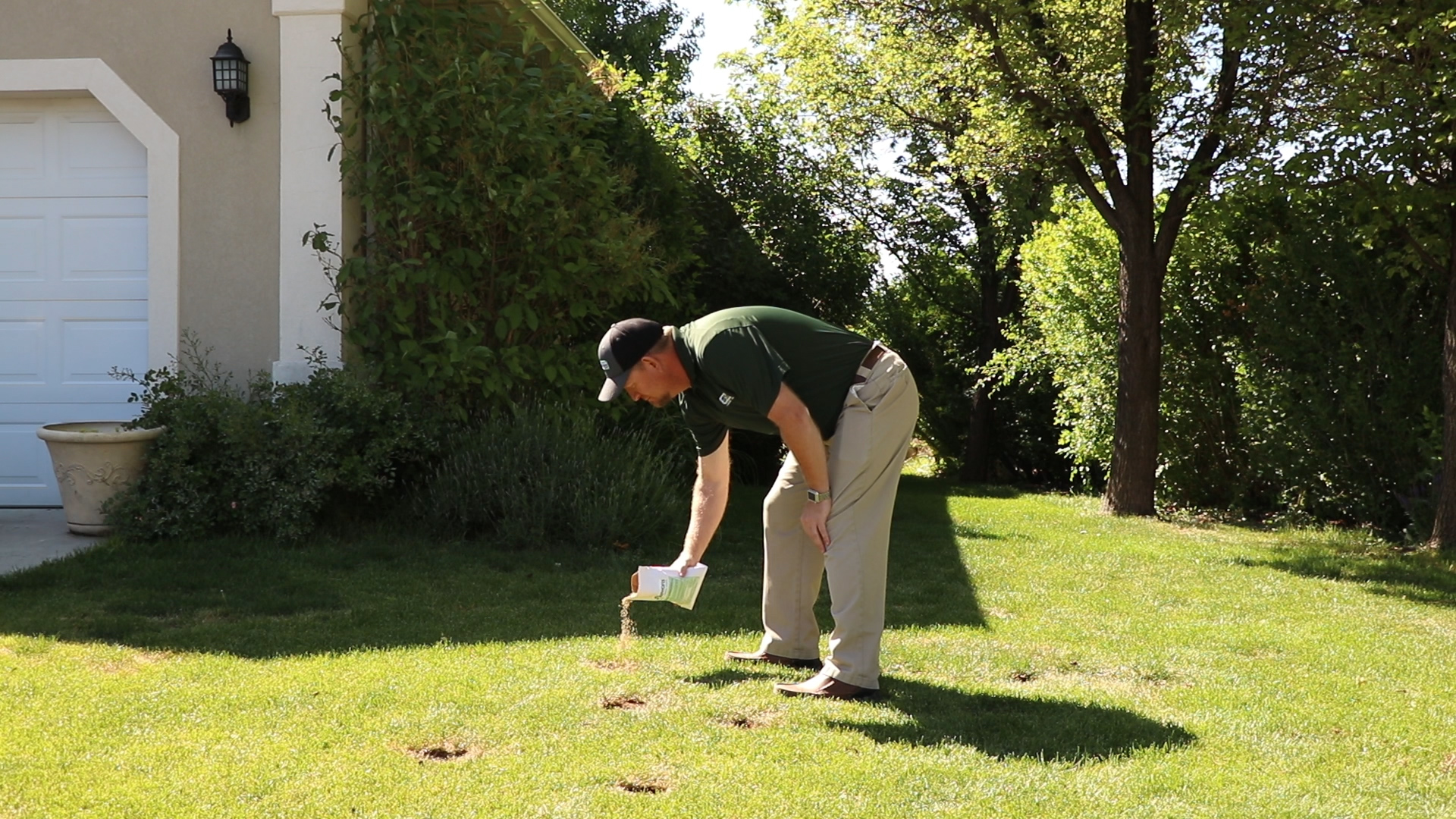

Follow these steps to overseed necrotic rings on your lawn:
- Clear away the dead grass in the center of the rings with a rake or grub hoe
- Rough up the soil 1 inch deep with a rake, your hands, or a grub hoe
- Apply a special grass seed mixture to the area
- Cover the area with peat moss
- Water the area well
If the center of the necrotic ring spot is still green, you can follow these steps to overseed:
- Apply a grass seed mixture to the dead area
- Use a spike roller to work the seed down into the area
- Cover the seed with a half-inch of peat moss
- Keep the area well-watered for about two weeks after overseeding
Aerating Necrotic Ring
Aeration can help the grass breathe so the lawn can fight the disease. Although aeration is helpful, if the equipment isn’t sanitized in between each lawn, it can spread necrotic ring from an infected lawn to a healthy lawn. So, make sure to choose a reputable landscaping company to aerate your lawn.
Adding Necrotic Ring Supplement Mix to the Soil
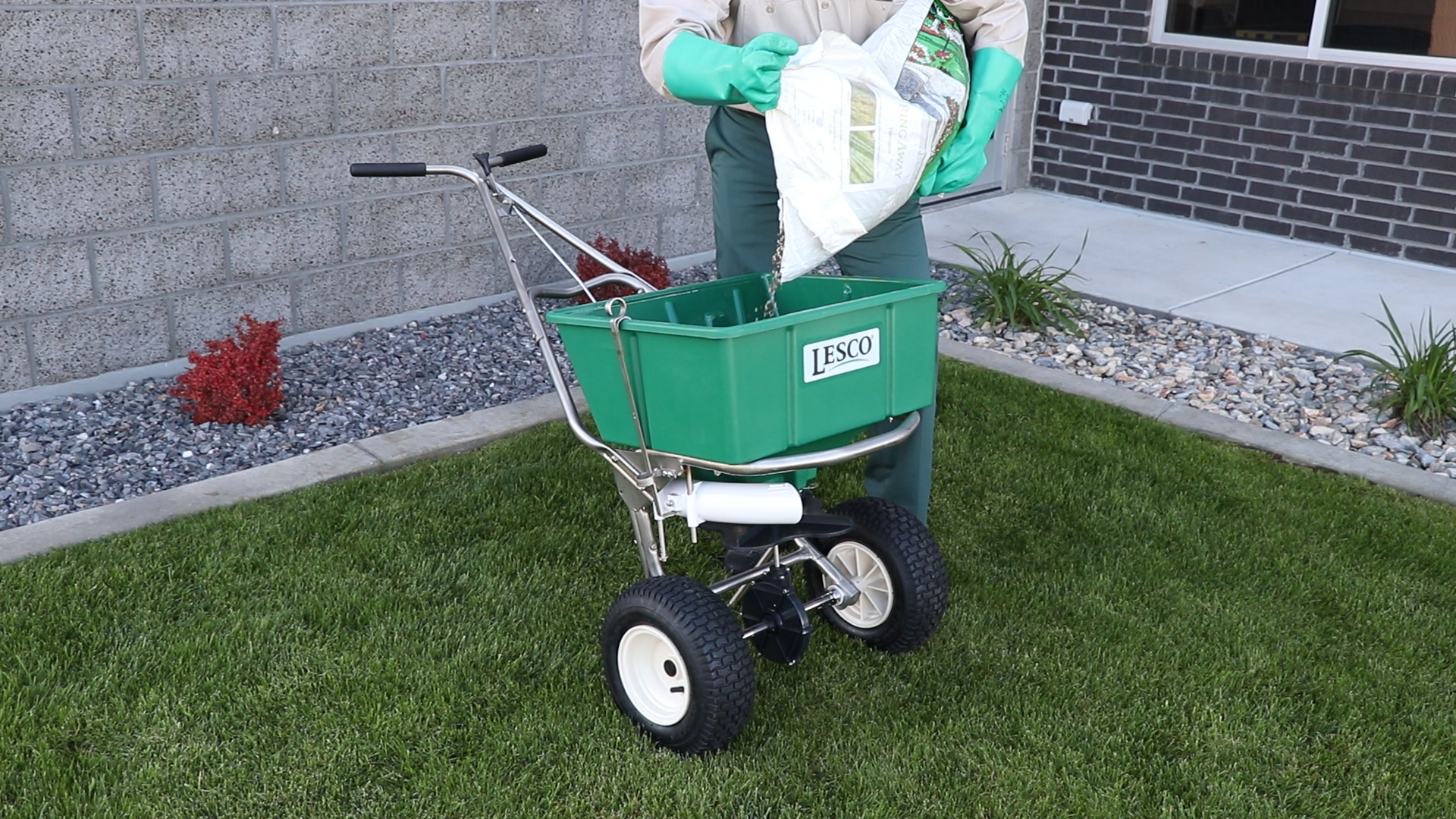

You can also search for a necrotic ring supplement mix at your local home improvement store. The supplement should help strengthen the root system of the lawn, allowing the grass to grow through the rings and hide the symptoms while the disease runs its course.
For a free lawn care estimate or to talk to a specialist, call or text 801-226-2261.
Need help aerating your lawn? Try our aeration service! Stewarts uses a clean and sanitized aeration machine to make sure your lawn can breathe without becoming infected with a fungus.
Sources:
https://utahpests.usu.edu/ipm/notes_orn/list-turf/necrotic-ring-spot
https://www.naturesseed.com/blog/how-to-avoid-necrotic-ring-spot-in-your-lawn-grass/
Watch our video about over-seeding necrotic ring spots for more information.



